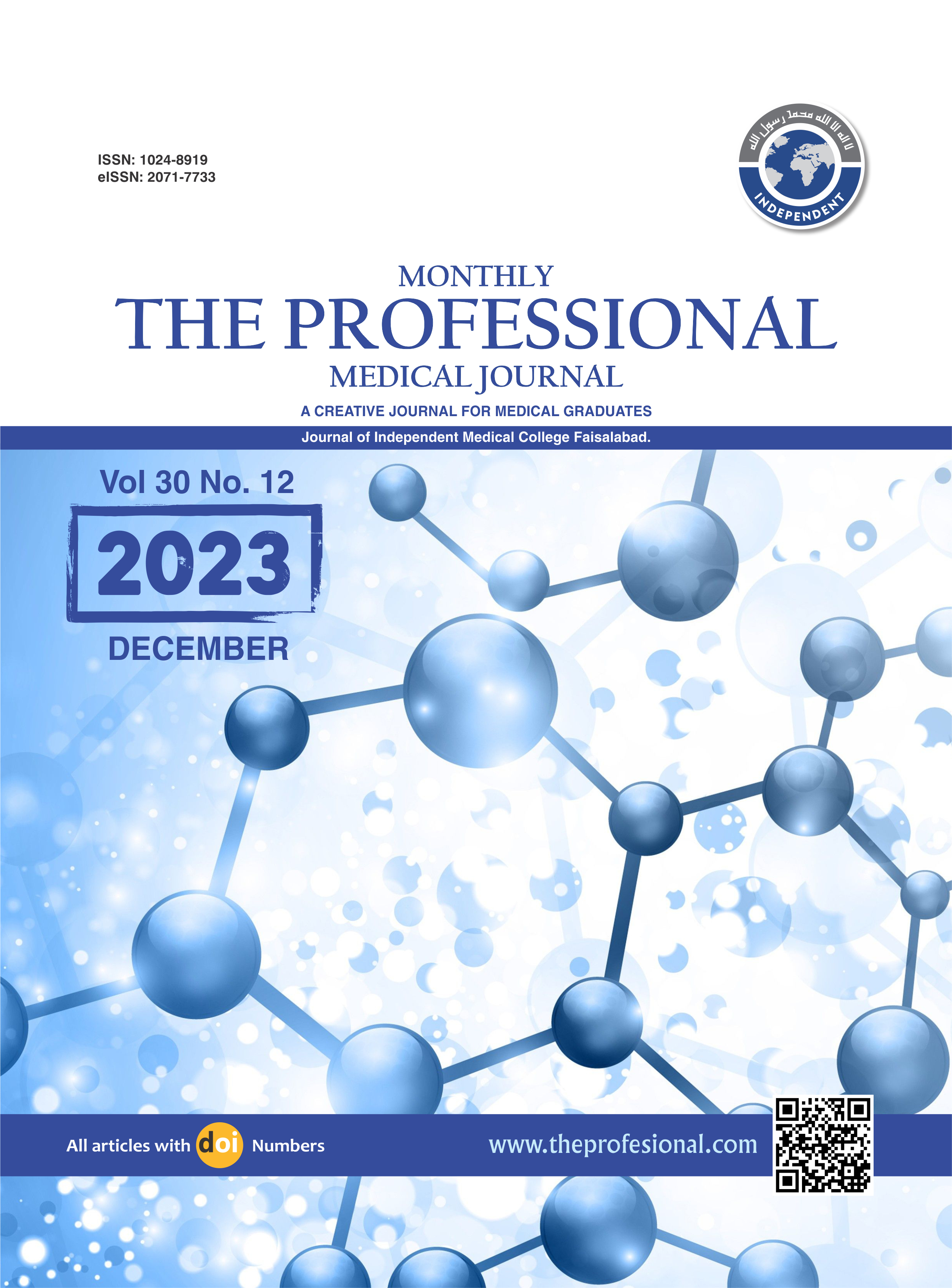Tube Laparostomy as Initial and Sole Intervention for Neonates with Idiopathic Pneumoperitonium.
DOI:
https://doi.org/10.29309/TPMJ/2023.30.12.7715Keywords:
Benign Pneumoperitonium, Idiopathic Pneumoperitonium, Neonates, Tube LaparostomyAbstract
Objective: To determine the efficacy of tube laparostomy an initial and sole surgical intervetion in neonates diagnosed with idiopathic pneumoperitonium. Study Design: Retrospective study. Setting: Department of Pediatric Surgery, Ghulam Muhammad Mahar Medical College Sukkur and Department of Pediatric Surgery, Chandka Medical College Larkana. Period: 1st April 2020 till 30th March 2023. Material & Methods: Tube laparostomy was done in Operation Theater under local anesthesia in all neonates with pneumoperitonium. After the procedure all patients were kept in neonatal intensive care unit for close observation. Patients draining gut contents in the drain underwent exploratory laparotomy while who clinically improved with only serous discharge in the drains and recovered smoothly were labeled as cases of idiopathic or benign pneumopertonium. Data was collected that included, age, gender, weight, efficacy of the procedure, need to do exploratory laparotomy, post-operative pain scores assessed with the help of neonatal infant pain assessment, total hospital stay length and mortality. Results: A total of 178 cases of neonatal pneumoperitonium were diagnosed during the study period. Out of these 178 cases only 23 (12.92%) were labelled as idiopathic pneumoperitonium on the basis of absence of gut contents in the drainage. Out of these 23 cases, 22 (95.65%) were successfully treated with laparostomy and one case was proceeded with exploratory laparotomy. Post procedure NIPS score remained low and favorable with mean and standard deviation of 1.83±1.4. Total length of hospital stay ranged from 4 days to 15 days. Mean and standard deviation of hospital stay was 6.22±2.8 days. Conclusion: It is concluded in our study that tube laparostomy in cases of idiopathic pneumoperitonium is very efficacious treatment option. This procedure is is easy to do, can be safely done in critically ill patients, can be done under local anesthesia, results in lesser post-operative pain scores and reduces the hospital stay length and cost of treatment.
Downloads
Published
Issue
Section
License
Copyright (c) 2023 The Professional Medical Journal

This work is licensed under a Creative Commons Attribution-NonCommercial 4.0 International License.


